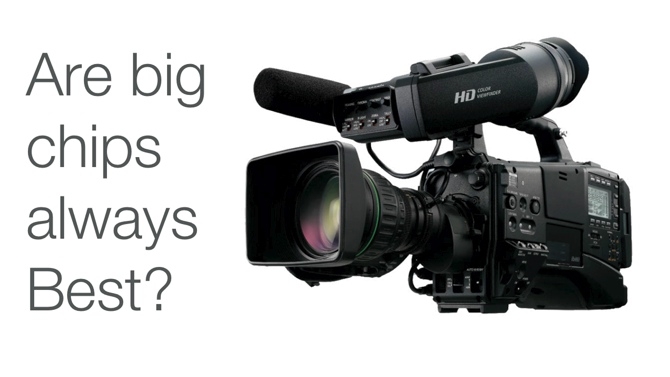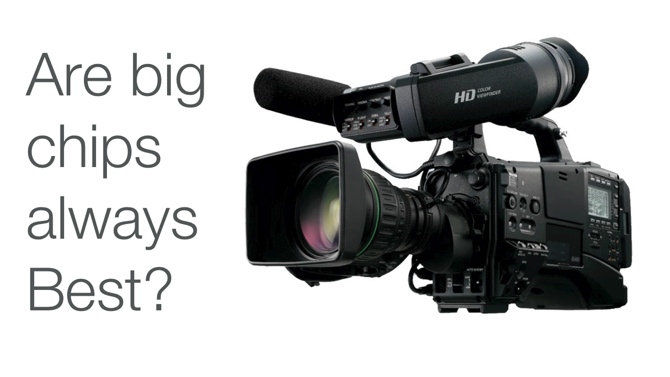
 Are big chips always best?
Are big chips always best?
Internet forums, YouTube and magazines are full of articles extolling the virtues of large sensor video cameras, whether it's the Red Epic or the Canon C300. But should we be obsessed with the Big Chips, or do they have a downside as well. Kieron Seth investigates.
It's not just dedicated video cameras. There are just as many bloggers fighting over the merits or otherwise of DSLRs for video. All the arguments are well rehearsed and don't need repeating here.
Refreshingly, Redsharknews.com recently gave a new perspective with a lively piece on the benefits of fixed lens camcorders over interchangeable lens camera systems (although it omitted to mention the annoying tendency that endless lens changing sucks dust into the inner workings of the camera).
DOF: Hard to handle
There's another big issue that is often overlooked in the rush to manufacture super sized sensors. The greater depth of field the large chip affords comes at a price - and I'm just not talking about the out of focus effect being used and used and used. A very shallow depth of focus places a huge onus on the camera operator or focus puller to be spot on every time. And when the operator hits the auto-focus switch, the camera and lens electronics and mechanisms have to be in absolute sync and perfectly calibrated with one another. With resolutions at 1080 and higher, focus mistakes - whether the fault of the user or manufacturer - are frighteningly plain to see.
Not for news
When shooting a drama, film or even corporate video, re-takes may be an option and focus slips can be rectified. News crews, live events producers and documentary shooters on the other hand go to work without a clapper board and a second chance.
Today's 2/3" ENG cameras provide a fantastic combination of ergonomics, image quality, build quality, portability, low light ability and focus control. Surpassed in terms of ultimate cinematic quality by their large sensor cousins, for many, if not most, productions they should still be first in the kit bag. And before casting aside the 1/3" chip camcorders, such as the Panasonic HPX250 or the Canon XF305, it's worth checking out their image quality and zoom range. If it's good enough for BBC HD production...
We're still working on RedShark's comments system. Meanwhile, if you'd like to respond to this article, drop an email to editor@redsharknews.com, and we'll print the best ones.
Tags: Technology


Comments